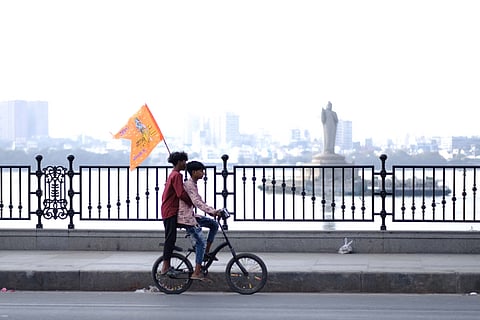
It’s been two weeks since curtains fell on the world’s largest democratic exercise. Braving the scorching summer heat, a record-breaking 64.2 crore Indian citizens exercised their voting rights. Despite legitimate complaints that a watered down Election Commission had turned a blind eye to the divisive and provocative campaign by the ruling dispensation, June 4, 2024, saw another peaceful transfer of power. Curiously, many argued that the campaign was somewhat muted at the beginning of this election with reports anticipating—some even as counting started on June 4—that the BJP would return with a triumphant mandate that matched the boisterous claims made by supporters and fans of Modi. A humbling performance saw them fall short of the magic halfway mark, and many have turned to finally expect a strong and rejuvenated opposition to the new and cut-to-size Modi 3.0.
A few weeks ago, I joined dozens of camerapersons and journalists huddled in the Media Gallery at a large venue in the suburb of Tukkuguda outside of Hyderabad. Soon, Rahul Gandhi would unveil the Congress Party’s manifesto to large crowds at the same venue that had marked the beginning of their successful campaign that overthrew the BRS government in the state only months ago. The event was delayed by a few hours, and the wait had started to seem unending. For the tens of thousands that thronged the venue, the summer heat did little to dampen their spirits. There were songs and dances on stage to keep the crowds occupied, and songs that praised Sonia Gandhi, Rahul Gandhi and Revanth Reddy. Copious amounts of water packets and buttermilk were distributed by volunteers and party workers. Amidst the announcements and sloganeering on the microphone and the chatter of the crowds, a distinct voice; a woman selling peanuts. And then, another voice of a man selling chat, fruits and other street food. It was festive, and economies of dead time have emerged around a waiting crowd.
A few months ago, I remember waiting similarly in the media section of a BJP event that live-telecast the Ayodhya event. The mild January morning was more relenting than the summer sun, but the waiting seemed perennial. Behind the crowds, a group of drummers and people in costumes—of Hanuman, Ram and other characters from Ramayana—taking a break before being called on again to play music and perform when the next BJP leader arrived at the entrance. Outside, men, women, and children on the streets sold saffron flags. On the tank-bund, the large lake that divides—but also unites—the twin cities of Hyderabad and Secunderabad, young and old stop and pose for cameras.
A young girl approaches them with more flags and other paraphernalia. Then bargains with her to get them for cheaper. She knows today is her biggest market. She sells two flags and runs back to her mother, seated under a streetlamp nearby with a young baby in her arm. A man dressed in a Hanuman suit and another in a monkey suit waiting at an event. A saffron flag in the foreground with the statue of Ambedkar in the backgroundms. Behind her, on the other side of the lake, a large statue of Ambedkar stands tall, pointing towards a better, brighter future farther away.
S Harikrishnan is a researcher and author of Social Spaces and the Public Sphere: A Spatial History of Modernity in Kerala. He is also a founding editor of Ala.
Check out a slideshow of images below: